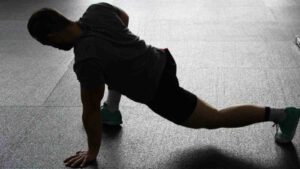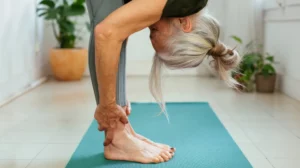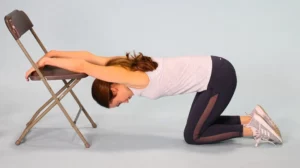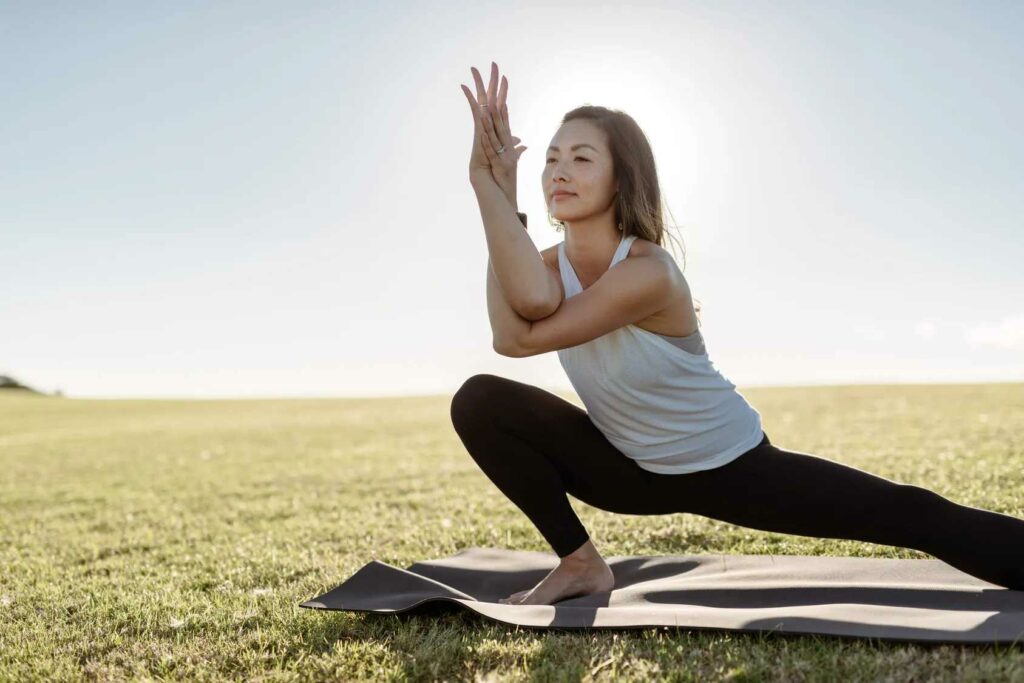It’s no secret that stretching is important. But many people don’t understand the full extent of the benefits that stretching provides. Not only does stretching help improve flexibility and range of motion, but it also has a host of other benefits, such as reducing the risk of injury, improving circulation, and helping to relieve stress. In this blog post, we will discuss the many benefits of stretching and provide you with a simple stretching routine that everyone can follow!
Contents
What Is Stretching?
 It is important to understand what stretching actually is before trying to do it. Stretching is defined as a specific elongation of the muscles and tendons in order to increase the range of motion in a joint. When a muscle or tendon is stretched, it creates micro-tears in the tissue.
It is important to understand what stretching actually is before trying to do it. Stretching is defined as a specific elongation of the muscles and tendons in order to increase the range of motion in a joint. When a muscle or tendon is stretched, it creates micro-tears in the tissue.
As the tissue heals, it becomes longer and more elastic. This is what allows people to increase their range of motion and flexibility over time. There are two main types of stretching: static and dynamic.
Static stretching is when you stretch a muscle and hold it in that position for a period of time, usually 15-30 seconds. Dynamic stretching is when you actively move your body or limb through a range of motion.
Most people are familiar with static stretches, but dynamic stretching is actually more effective and safer, especially for athletes. That’s because static stretching can actually weaken muscles and make them more susceptible to injury. Therefore, it’s important to understand how to properly stretch, as well as the different benefits that stretching provides.
What Should Be The Stretching Routine?
A stretching routine is a series of exercises that lengthen and stretch the muscles. Stretching can be performed either with or without movement. It is believed that stretching with movement is more beneficial because it increases blood flow to the muscles.
Your routine should be performed 3-5 times per week and should last for at least 10 minutes. According to studies, the best time to stretch is after a workout when the muscles are warm.
More often, you can choose your routine by muscle group. For example, if you want to focus on your lower body, you could do a routine that targets the hamstrings, quadriceps, and calves. This can be extremely helpful if you have a specific problem area that you would like to improve.
With the right stretching routine, you can actually improve your flexibility, range of motion, and joint function. Additionally, stretching can help to relieve muscle pain, tension headaches, and stress. So, there are many good reasons to make stretching a part of your regular routine!
What Are The Some Stretching Examples?
 There are various types of stretching exercises, and each offers different benefits. Some common examples include:
There are various types of stretching exercises, and each offers different benefits. Some common examples include:
Ballistic stretching
This type of stretching involves rapid, bouncing movements. It’s not recommended for beginners because it can lead to injury if not done correctly. Some stretching exercises might include:
- Bouncing up and down on your toes
- Jumping jacks
- High-knee running in place
Dynamic stretching
Dynamic stretches involve moving your body through a full range of motion. These are often used as part of a warm-up before exercise or sports. This works to increase blood flow and temperature in the muscles, which can improve your performance and prevent injury.
One study found that dynamic stretching may even be more effective than static stretching at improving power output and jump height. Some examples might include:
- High knees
- Butt kickers
- Walking lunges with a twist
- Carioca
- Mountain climbers
Passive stretching
Passive stretching involves holding a stretch for a period of time with another person, your body weight, or a strap. This stretching type is typically used when working to increase flexibility. It’s important not to overstretch in a passive stretch, as this can lead to injury. It includes:
- Hold the stretch for 15 to 30 seconds.
- Relax and breathe deeply during the stretch.
- Repeat the stretch two to four times.
- Gradually increase the duration of the stretches over time.
Active stretching
Active stretching involves moving your body or a limb into and out of a stretch position. This type of stretching is often used as part of a warm-up before physical activity, as it helps to increase blood flow and heart rate. It can also be used as part of a cool-down after exercise, as it can help to reduce muscle soreness.
PNF stretching
 PNF stands for proprioceptive neuromuscular facilitation. This type of stretching uses both the mind and body to achieve a deeper stretch. It’s a two-part process that involves contracting the muscle you want to stretch (isometrically) before performing the actual stretching movements.
PNF stands for proprioceptive neuromuscular facilitation. This type of stretching uses both the mind and body to achieve a deeper stretch. It’s a two-part process that involves contracting the muscle you want to stretch (isometrically) before performing the actual stretching movements.
The isometric contraction phase of PNF stretching fools the brain into thinking the muscle is about to engage in the activity. This triggers a reflex that relaxes the muscle. When the muscle is relaxed, you can stretch it further than you could if you were just using static stretching.
Overall, these are some of the examples of why stretching is important not just for athletes, but for everybody. When it comes to our well-being, stretching should become a regular habit like brushing our teeth every day. Let’s start making an effort to add some stretches into our lives starting today!
How Does Stretching Routine Help You?
It is no secret that stretching is good for you. It helps improve your flexibility, and range of motion, and can even help prevent injuries. But what exactly are the benefits of stretching? Why should you make sure to include a stretching routine in your workout routine?
Here are some of the top benefits of stretching:
Increases Flexibility
This is probably the most well-known benefit of stretching. When you stretch regularly, your muscles become more flexible and pliable. This means that they are less likely to be injured when you do things that require them to move in a wider range of motion, such as playing sports or doing yoga.
Improves Range of Motion
If you have ever had a massage, you may have noticed that the therapist often uses long, smooth strokes. This is because massage can help to improve your range of motion. The same is true of stretching. When you stretch regularly, your muscles become used to being extended, and this can help to improve your overall range of motion.
Help Prevent Injuries
If you are not flexible, you are more likely to experience joint pain and muscle strains. This is because your muscles and joints are not used to moving in a wide range of motion. By stretching regularly, you can help to make your muscles and joints more resilient, and less likely to be injured.
Relieve Muscle Soreness
If you have ever worked out hard, you may have experienced muscle soreness the next day. This is because your muscles are not used to being worked in that way, and they need time to recover. Stretching can help to reduce muscle soreness, and speed up the recovery process.
Feels Good
 This may not be a “benefit” per see, but stretching feels good! It is a relaxing and stress-relieving activity and can help you to feel more alert and focused. For example, many people find that they have more energy and focus after a good stretching session.
This may not be a “benefit” per see, but stretching feels good! It is a relaxing and stress-relieving activity and can help you to feel more alert and focused. For example, many people find that they have more energy and focus after a good stretching session.
As you can see, there are many benefits of stretching. So why not give it a try? You may be surprised at how good it feels, and how much it can help you in your everyday life. Moreover, it is an activity that is suitable for people of all ages and fitness levels. So what are you waiting for? Start stretching today!
Are There Any Limitations And Concerns?
When it comes to stretching, there are a few things you should keep in mind.
- First, never stretch to the point of pain.
- Second, always warm up before stretching, and cool down afterward.
- Third, if you have any medical concerns or injuries, please consult your doctor before starting a stretching routine.
With those things in mind, you can do the stretching routine carefully. There are also some limitations that you should be aware of.
- For instance, people with conditions like osteoporosis or hernias should avoid certain types of stretching.
- Additionally, pregnant women and people who have had recent surgeries should also talk to their doctor before starting to stretch.
Assuming you don’t have any of these limitations, though, stretching can be a great way to improve your flexibility, range of motion, and overall mobility. It can also help relieve pain from conditions like arthritis. Plus, it can help reduce stress and improve your mood. So, there are plenty of good reasons to start stretching today!
Conclusion
In conclusion, a stretching routine can be extremely beneficial for everyone. It can help improve flexibility, reduce pain and soreness, and even improve your overall performance in physical activity. Whether you’re a beginner or a seasoned athlete, including a stretching routine in your regular workout routine is a great way to stay healthy and improve your quality of life.
Therefore, you should not hesitate to give stretching a try – it just might be the key to unlocking a healthier, happier you!
Physical Therapy help patients recover from pain. If you’re experiencing Back pain, Shoulder pain, Knee pain, Neck pain, Elbow pain, Hip pain, or Arthritis pain, a physical therapist at MantraCare can help: Book a physiotherapy session.


